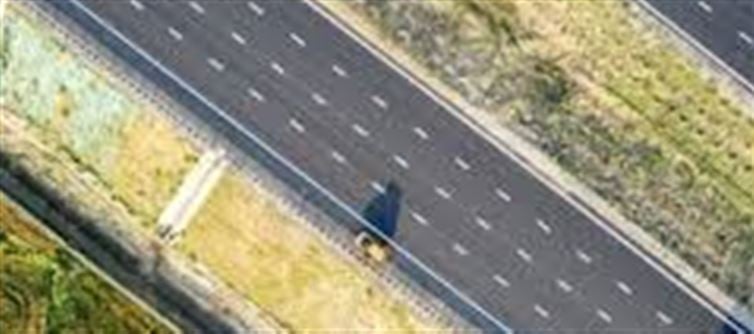
The Delhi-Mumbai Expressway, one of the most awaited infrastructure projects in india, is set to open by December 2025. This ambitious expressway will significantly enhance road connectivity between North India and Western India, connecting the capital city of delhi with the financial hub of Mumbai. Here's everything you need to know about this monumental project and how it will impact travel and trade.
1. What is the Delhi-Mumbai Expressway?
The Delhi-Mumbai Expressway is a massive 1,386-kilometer road project designed to create a seamless, high-speed corridor between the two cities. It will reduce travel time between delhi and mumbai from around 24 hours to 12 hours, cutting down the previous journey duration by 50%.
The project connects six states: Delhi, Haryana, Rajasthan, Madhya Pradesh, Maharashtra, and Gujarat.
Key Features:
- High-speed expressway: Designed for vehicles to travel at speeds of up to 120 km/h.
- Six-lane highway: Expanding to an eight-lane corridor in certain sections.
- Modern toll plazas: Equipped with electronic toll collection systems for faster movement.
2. How Will the Expressway Change Travel?
Once completed, the Delhi-Mumbai Expressway will revolutionize travel between the two cities, offering a faster, smoother, and more convenient route.
Benefits of the Expressway:
- Reduced travel time: The expressway will cut the distance by 50%, making travel time faster and more efficient.
- Faster delivery of goods: For businesses relying on road transport, the expressway will help in the timely delivery of goods, promoting trade between the north and west.
- Boost to tourism: The expressway will not only make travel easier for commuters but will also give a boost to tourism as travelers can visit various destinations along the route.
3. Key Construction Milestones
The Delhi-Mumbai Expressway has already seen significant progress, with many sections of the expressway nearing completion. Some sections of the expressway are already open for partial use, while others are expected to be fully operational by December 2025.
Key milestones include:
- Completion of major tunnels: The expressway features several tunnels to make the road more efficient and safe, particularly in the hilly regions.
- Bridges and flyovers: Over 30 major bridges and flyovers are being constructed to handle traffic smoothly and avoid bottlenecks.
- Sustainable design: The project incorporates eco-friendly elements such as green landscaping, and noise barriers, and aims to minimize environmental impact.
4. Economic Impact: Connecting Key Markets
The Delhi-Mumbai Expressway is set to have a transformative economic impact, not just for travelers but also for local businesses and industries. By improving road connectivity, it will:
- Increase trade efficiency: Enhanced movement of goods between Delhi, Mumbai, and the other connected states will reduce logistical costs and promote economic growth.
- Job creation: The project has already created thousands of construction and engineering jobs and will continue to benefit local economies in the long run.
- Encourage industrial growth: The expressway will make it easier for industries, particularly in manufacturing, agriculture, and e-commerce, to transport goods quickly, making them more competitive in global markets.
5. Sustainability Features: A Green Highway
The Delhi-Mumbai Expressway is designed with sustainability in mind. The project aims to minimize its environmental footprint through:
- Greenery along the route: Thousands of trees and plants will be planted along the expressway to reduce carbon emissions.
- Wildlife corridors: The expressway is designed with dedicated wildlife corridors to minimize the disruption to wildlife habitats, ensuring environmental sustainability.
- Solar energy: Solar panels are being installed on certain stretches to harness renewable energy, making the project more energy-efficient.
6. Tourism and Connectivity Boost
The Delhi-Mumbai Expressway will also have a significant impact on tourism. The expressway will pass through some of India’s most scenic regions, offering travelers a chance to explore new tourist destinations more easily. The road will cut down on travel time, making it easier to visit:
- Historic sites in rajasthan and Madhya Pradesh.
- Beach destinations in gujarat and Maharashtra.
- Hill stations and cultural hubs along the route.
Tourists and travelers can expect to visit iconic places like Udaipur, Vadodara, and Surat with minimal effort.
7. What’s Next for the Delhi-Mumbai Expressway?
As the expressway nears completion, more information will be shared regarding the final route plans, toll charges, and any additional infrastructure developments.
For now, the anticipation is building for the official opening, and it's expected to be a game-changer for inter-state travel, business, and tourism across India.
Conclusion: The Future of indian Road Infrastructure
The Delhi-Mumbai Expressway isn’t just another road project; it’s a bold step toward modernizing India’s road infrastructure and boosting economic growth. By connecting six states and reducing travel time by half, this expressway will make businesses more competitive, reduce the carbon footprint, and help people get to their destinations faster.
Get ready for a more connected, faster, and efficient India by december 2025!
Disclaimer:
The views and opinions expressed in this article are those of the author and do not necessarily reflect the official policy or position of any agency, organization, employer, or company. All information provided is for general informational purposes only. While every effort has been made to ensure accuracy, we make no representations or warranties of any kind, express or implied, about the completeness, reliability, or suitability of the information contained herein. Readers are advised to verify facts and seek professional advice where necessary. Any reliance placed on such information is strictly at the reader’s own risk..jpg)




 click and follow Indiaherald WhatsApp channel
click and follow Indiaherald WhatsApp channel